| |
|
32.
 | The Beautiful Language - The Punishment
| The Beautiful Language - The Punishment |
| |
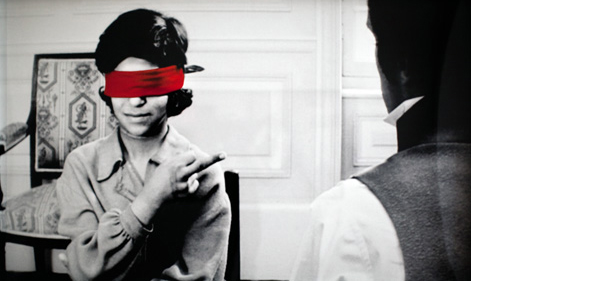
'' By introducing thought-provoking statements to these images, mounir fatmi brings the original story to bear on contemporary society,
bringing into focus the thin line between brutality and civilisation. ''
Caroline Rossiter
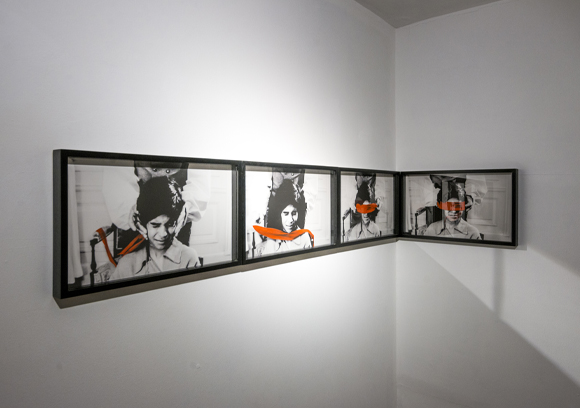
The Beautiful Language - The Blindfold
Exhibition view of La Ligne Droite, Galerie Fatma Jellal, 2013, Casablanca.
Courtesy of the artist.

The Beautiful Language - The Blindfold
Exhibition view of La Ligne Droite, Galerie Fatma Jellal, 2013, Casablanca.
Courtesy of the artist.
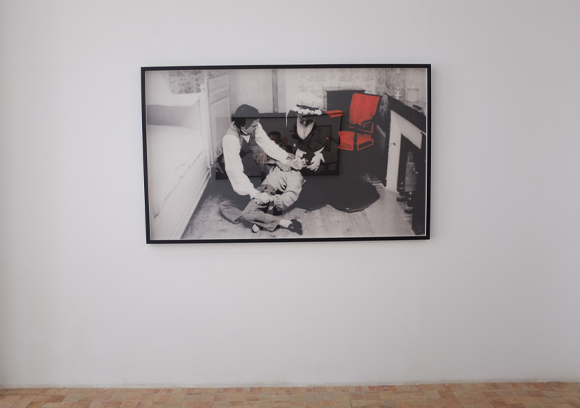
The Beautiful Language - The Crisis
Exhibition view of La Ligne Droite, Galerie Fatma Jellal, 2013, Casablanca.
Courtesy of the artist.
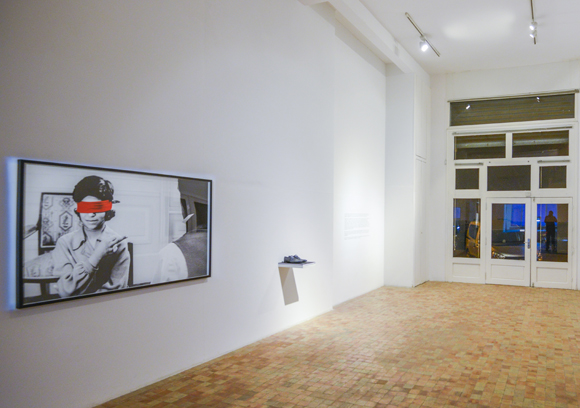
The Beautiful Language - The Punishment
Exhibition view of La Ligne Droite, Galerie Fatma Jellal, 2013, Casablanca.
Courtesy of the artist.
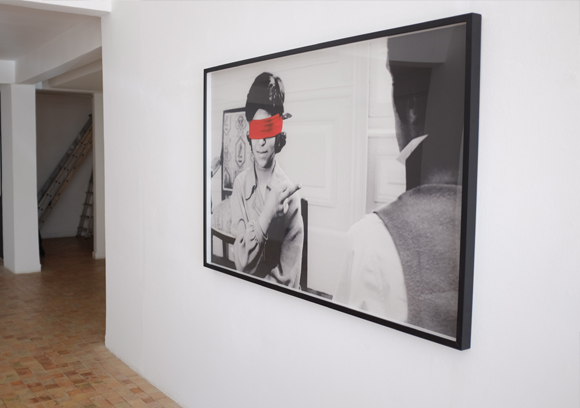
The Beautiful Language - The Punishment
Exhibition view of La Ligne Droite, Galerie Fatma Jellal, 2013, Casablanca.
Courtesy of the artist.
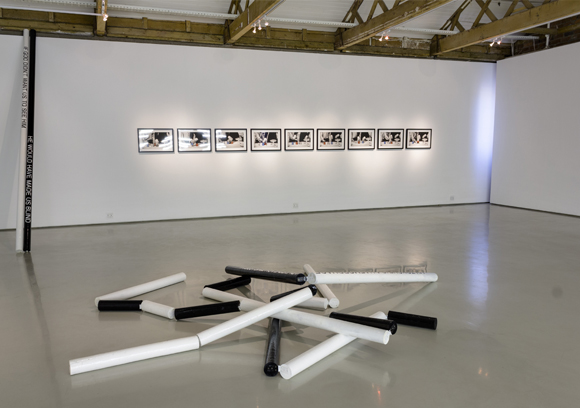
The Beautiful Language - The Game
View from Suspect Language, Goodman Gallery, 2012, Cape Town.
Courtesy of the artist.
|
|
The Punishment, 2013, print on baryte paper, 109 x 180 cm.
View from Suspect Language, Goodman Gallery, 2012, Cape Town.
Courtesy of the artist and Ceysson & Bénétière, Paris.
Ed. of 5 + 2 A.P.
|
|
|
|
L'œuvre photographique The Beautiful language présente six séries de photographies en noir et blanc portant chacune un titre : "Le Jeu", "Le Bandeau", "La Crise", "La Punition", "Le Piège" et enfin "La Naissance". Les images en noir et blanc sont extraites du film L'Enfant sauvage de Truffaut (1970) qui s'inspire de l'histoire vraie d'un enfant non civilisé et ne possédant pas le langage qui se voit un jour capturé par des paysans au 18e siècle, puis recueilli par un médecin qui l'étudie et fait son éducation. Les images comportent des éléments colorisés et donnent également à voir des motifs calligraphiques en surimpression, occultant partiellement la scène et les personnages présents.
The Beautiful language interroge l'éducation et les processus d'acquisition du langage. L'œuvre observe l'attitude des protagonistes et leur relation au cours de la situation pédagogique représentée. L'œuvre permet ainsi d'explorer des notions telles que "état sauvage" ou "civilisation" et d'étudier leurs rapports, tout en évoquant la question de l'altérité et de la relation à l'autre et celle de la perception de la différence culturelle de manière générale.
The Beautiful language recense les éléments notables de la situation d'apprentissage en réalisant des arrêts sur image et des effets de coloration. Les images mettent en scène différentes étapes de l'enseignement du médecin et de l'apprentissage du jeune garçon et donnent à voir l'attitude des protagonistes au cours de la situation d'apprentissage, transformés en "élève" et "professeur". L'enseignement mis en images se compose essentiellement de tests psychomoteurs et d'expérimentations logiques. La relation à l'autre est désignée comme un rapport d'autorité entre un sujet qui sait et un sujet qui ignore, entre un sujet qui donne et un autre qui reçoit un enseignement ou des éléments de discours, entre un agent de la civilisation enfin et un agent du chaos naturel qui appelle à être éduqué et contrôlé.
L'éducation et le langage ont ici des rôles ambivalents. L'éducation est un jeu mais également une forme d'escroquerie, à l'image du jeu de bonneteau utilisé par le professeur pour tester et développer les capacités cognitives de son élève. Le jeu est à gain nul pour l'enfant, mais pas pour le professeur qui poursuit un but précis. L'éducation offre un regard sur le monde, fournit tout un appareil de perceptions et de réflexions mêlées, et dans le même temps elle s'impose comme vision unique et dominante du monde et constitue une forme d'aveuglement. Elle se veut préparation à l'existence et enrichissement de l'expérience de vie et en même temps elle entraîne la destruction de l'innocence, de la jeunesse et de l'insouciance du sujet.
Le professeur est à la fois un humaniste dont les intentions sont bienveillantes et un assassin, à l'image du professeur de La Leçon de Ionesco que l'ignorance de son élève exaspère au point qu'il finit par la tuer. L'éducation et l'acquisition des langages traduisent une forme de violence qu'on aurait tendance à attribuer au "sauvage" et non au "civilisé". Les effets de l'éducation et de l'apprentissage de la langue s'observent à la fois sur l'esprit et le corps. Information, l'éducation ordonne (au sens deleuzien) et met en forme les pensées et les corps. L'éducation apparaît ici comme une forme de conditionnement sévère. Les fondements pédagogiques des processus d'acquisition des savoirs, des usages et des langues sont fortement remis en question, parfois de manière humoristique comme ce clin d'œil à la notion de l'arbitraire de la langue, notion linguistique grotesquement mise en scène avec l'image du jeune garçon faisant face à l'objectif, majeur tendu, inconscient de l'insulte faite au professeur. Alors que la dramatisation de la mise en scène rend compte de la violence des processus d'acquisition des langages, le recours au registre humoristique ou grotesque et la mise en scène d'une absurdité liée à toute situation d'apprentissage invite au renversement des rôles et des pouvoirs et à une forme de subversion pédagogique.
Studio Fatmi, Juillet 2017 |
|
The Beautiful Language is a photographic work featuring six series of black & white photographs whose titles are: “The Game”, “The Blindfold”, “The Crisis”, “The Punishment”, “The Trap” and “The Birth”. These images are taken from the film The Wild Child by François Truffaut (1970), which was inspired by the true story of an uncivilized child who didn’t know how to speak and was captured by 18th century farmers, then taken in by a doctor who studied and educated him. The images contain some colored elements as well as superimposed calligraphic motifs partially masking the scenes and characters.
The Beautiful Language questions education and the processes of language acquisition. The work observes the attitudes of the characters and their relations over the course of the pedagogical interaction that is depicted. In this way, it enables the exploration of notions such as “savagery” or “civilization” and the study of their relations, while evoking the question of alterity and of the perception of cultural differences in general.
The Beautiful Language draws up an inventory of the notable elements in the context of teaching by creating image stills and coloration effects. The images show different stages in the doctor’s teaching and the young boy’s learning and highlight the attitudes of the characters in this educational context, where they become “student” and “teacher”. The teaching shown in the images mostly consists in psychomotor tests and logic experiments. The relation to the other is depicted as a relation of authority between a subject who knows and one who is ignorant, one that gives and the other that receives a teaching or elements of speech, between an agent of civilization and an agent of natural chaos that is in need of education and control.
Education and language have ambivalent roles here. Education is a game but also a sort of fraud, just like the three-card trick used by the professor to test and develop the cognitive capacities of his pupil. The child has nothing to gain in the game, unlike the professor, who is after a precise objective. Education offers insight on the world and provides a multitude of perceptions and reflections, while at the same time imposing a unique and dominant vision of the world, and as such it constitutes a form of blindness. It aims to be a preparation for one’s existence and an enrichment of the experience of life, yet at the same time it provokes the destruction of the subject’s innocence, youth and carefreeness.
The professor is both a humanist whose intentions are benevolent, and a killer, like the professor in Ionesco’s play The Lesson, exasperated by the ignorance of his student to the point of killing her. Education and the acquisition of languages imply a form of violence we would be likely to attribute to the “savage” rather than the “civilized”. The effects of education and learning to speak can be seen both on the mind and the body. As a form of information, education orders (in the Deleuzian sense) and shapes thoughts and bodies. Education is seen here as a form of strict conditioning. The pedagogical foundation of the processes of acquisition of knowledge, practices and languages are strongly challenged, sometimes in a humoristic way, like in the case of the nod to the notion of the arbitrariness of language, a linguistic notion shown in a grotesque way with the image of the young boy facing the camera, his middle finger up, ignorant of the insult this represents to the professor. While the dramatic staging portrays the violence of the process of language acquisition, resorting to humor and the grotesque and showing the absurdity that comes with any learning situation invokes the inversion of roles and powers, and a form of pedagogical subversion.
Studio Fatmi, July 2017. |
|
|
|